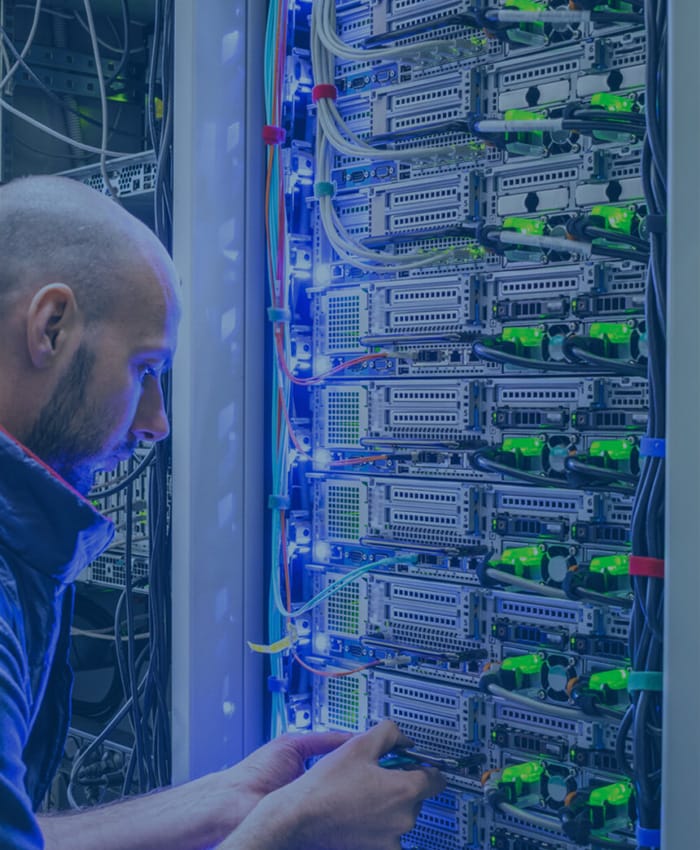When people think about security systems, they often picture cameras, alarms, or keycard entry systems. What often goes unnoticed is the hidden backbone that makes all these technologies possible: the cabling and connectivity that links everything together. Without a reliable physical network, even the most advanced surveillance system or access control network will fall short. Just as a building needs strong foundations, security systems need a well-planned cabling design that ensures stability, performance, and adaptability. This means considering both present requirements and the inevitable future demand for more devices and higher bandwidth. Taking a holistic approach makes all the difference, especially when it comes to planning for complex network setups that need to remain reliable under pressure.
The Hidden Link Between Security and Cabling
Security devices today are no longer simple stand-alone systems. Cameras record in high definition, alarms connect to remote monitoring hubs, and access control systems often integrate with cloud platforms. All of these tools depend on a stable network, and that network depends on structured cabling. Poor design can result in choppy video feeds, delayed alerts, or even system outages at critical moments.
The stakes are high because security systems are designed to prevent loss, protect property, and keep people safe. A weak link in the cabling can compromise the entire operation. That is why attention to detail is not optional. Everything from cable type to routing, grounding, and redundancy plays a role in delivering consistent performance. This becomes even more essential as organizations add more cameras, sensors, and connected devices that compete for bandwidth.
A well-designed system anticipates these pressures and builds in extra capacity. It also ensures that the physical installation supports both efficiency and protection. Securing cables in trays, organizing connections at patch panels, and using high-quality terminations are not cosmetic steps — they are vital practices that preserve system reliability over time. Security integrators know this, and many partner with experienced providers to achieve a strong foundation for systems like those showcased on http://www.adrny.com/.
Building Blocks of a Reliable Infrastructure
Before diving into the details, it is worth stressing that every successful security network starts with proper planning. Jumping directly into installation without mapping out capacity and growth can lead to bottlenecks or costly rework later. Once planning is complete, several key elements come into play.
First is the choice between copper and fiber cabling. Copper Ethernet cables, especially Cat6 and Cat6a, are cost-effective and well-suited for shorter runs with moderate bandwidth needs. Fiber, on the other hand, is essential for long distances, high-speed backbones, and reducing signal interference. Many modern facilities use a hybrid approach, with fiber serving as the backbone and copper drops connecting individual devices.
Next is power delivery. Many cameras and sensors are powered using Power over Ethernet (PoE), which reduces the need for separate electrical wiring. However, PoE places specific demands on cabling and switches. Cabling must support higher wattage levels without overheating, and switches must be capable of delivering consistent power. Planning for this at the start avoids headaches when adding more devices later.
Environmental considerations also matter. Cabling may run through hot mechanical rooms, outdoor conduits, or spaces exposed to moisture. Choosing the right jacket materials and protecting pathways with conduits or trays ensures performance remains stable even under stress.
Designing for Performance and Security
Designing a cabling system for security goes beyond simply making connections. The infrastructure must be organized, easy to maintain, and physically secure. That means mapping out pathways that reduce interference, avoiding sharp bends that degrade signals, and labeling every cable for quick identification. Documentation is not just a formality. It becomes the playbook for troubleshooting, expansions, and audits.
Another critical factor is network segmentation. Security devices generate sensitive data that should not compete with other business applications on the same bandwidth. Designing networks with virtual LANs or separate subnets ensures video feeds and access logs get priority treatment. This also provides an added layer of cybersecurity by isolating security traffic from the general network.
Bandwidth planning is equally important. High-resolution cameras demand substantial throughput, especially when multiple streams are active. Calculating peak loads and ensuring cabling can handle them prevents bottlenecks. This requires thinking beyond today’s needs and anticipating tomorrow’s demands.
Preparing for Scalability and Growth
One of the realities of security infrastructure is that it rarely stays the same for long. New buildings are added, more cameras are installed, and software upgrades introduce higher data requirements. A resilient cabling design makes room for these changes without requiring a full overhaul.
Scalability begins with structured cabling practices. Instead of running cables haphazardly to each device, structured cabling creates a system of organized pathways, patch panels, and distribution points. This not only makes expansion easier but also keeps systems more reliable. Adding a new device becomes as simple as patching into the existing structure.
Future-proofing also involves using higher-category cables than the bare minimum. For example, choosing Cat6a over Cat5e may add a slight upfront cost, but it ensures that the infrastructure can handle future bandwidth needs without replacement. This proactive mindset saves time, money, and disruptions down the road.
A Foundation That Protects
From the outside, security systems may look like a collection of cameras, alarms, and sensors. In reality, their effectiveness depends on the invisible network that ties everything together. Strong cabling design ensures video feeds are clear, alarms are instant, and access controls are reliable. It also prepares facilities for inevitable growth by leaving room for expansion and supporting future technologies.
The key takeaway is that security and cabling should never be treated as separate priorities. They are two halves of the same system, and the success of one depends entirely on the strength of the other. By investing in quality infrastructure today and partnering with professionals who understand both connectivity and protection, organizations can build security systems that are resilient, scalable, and ready for the challenges of tomorrow.
